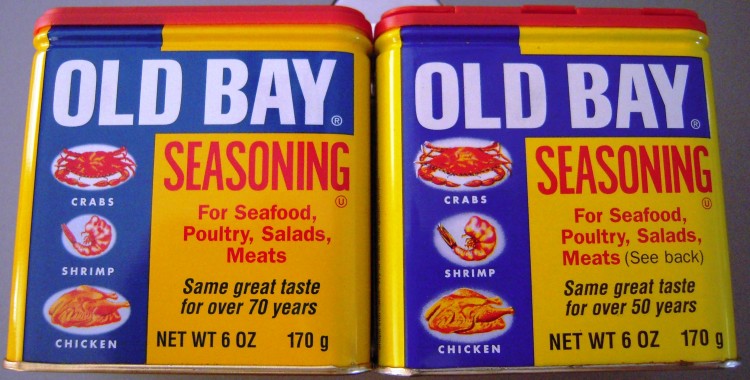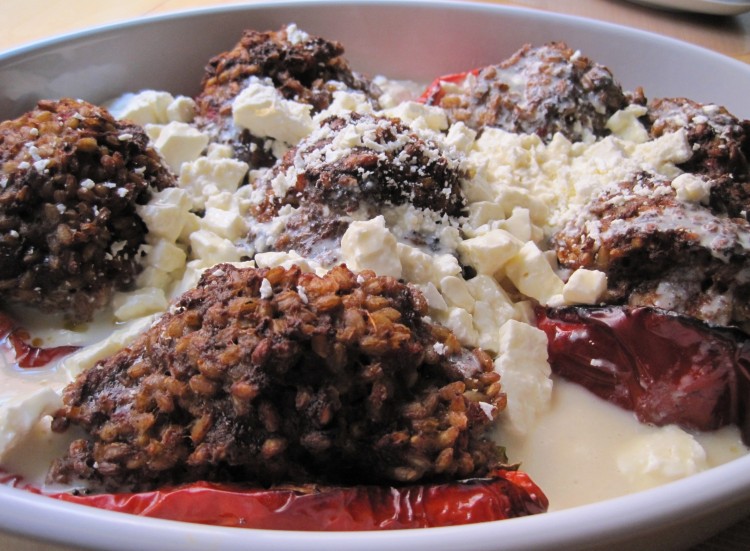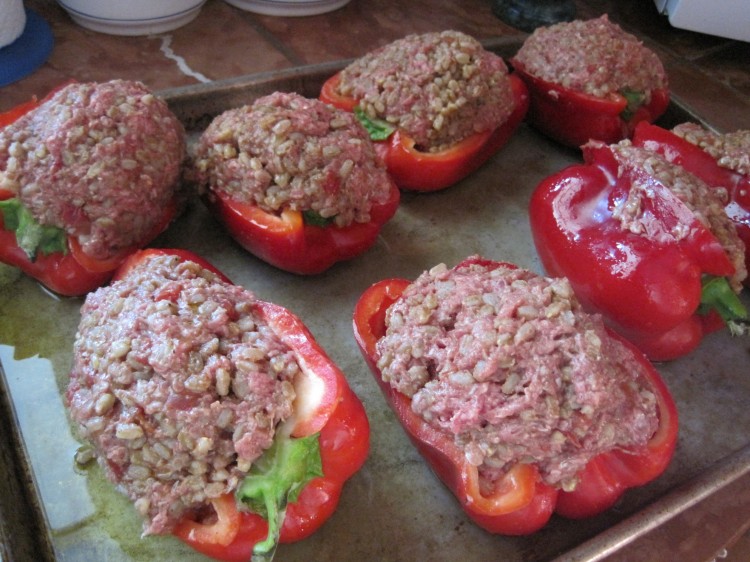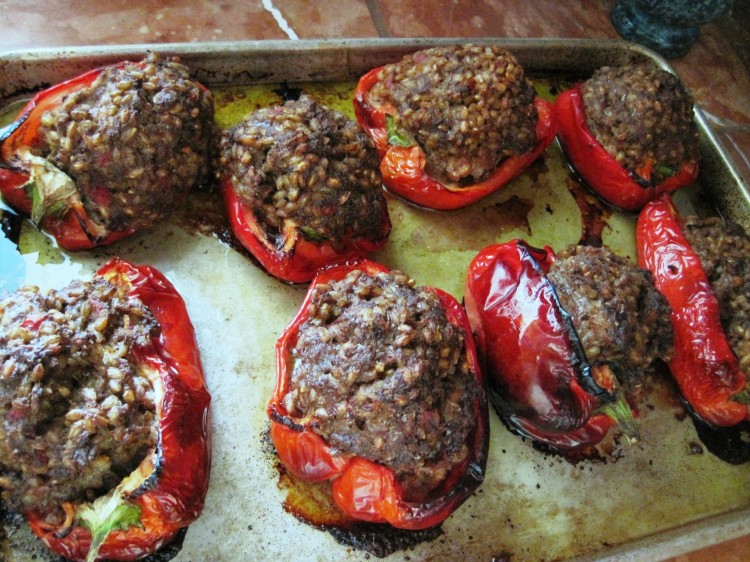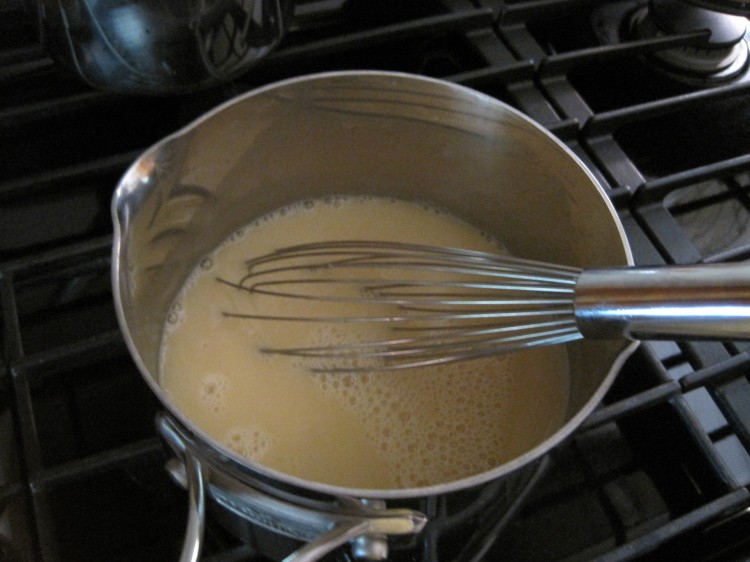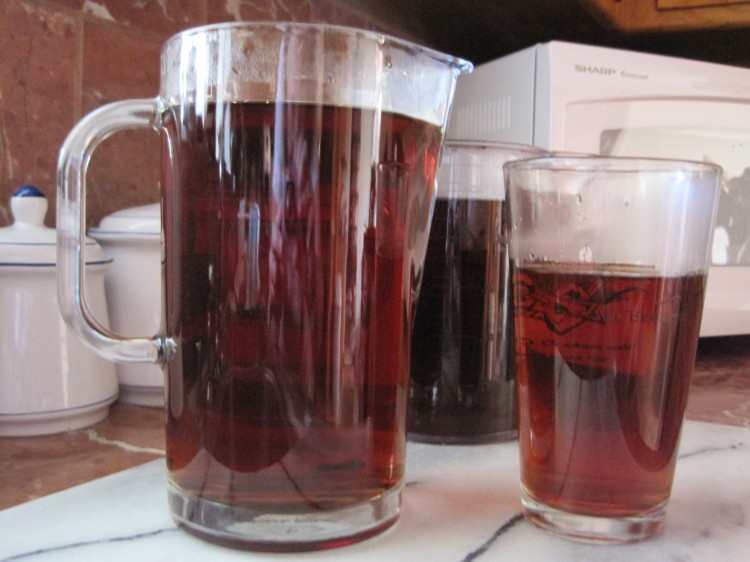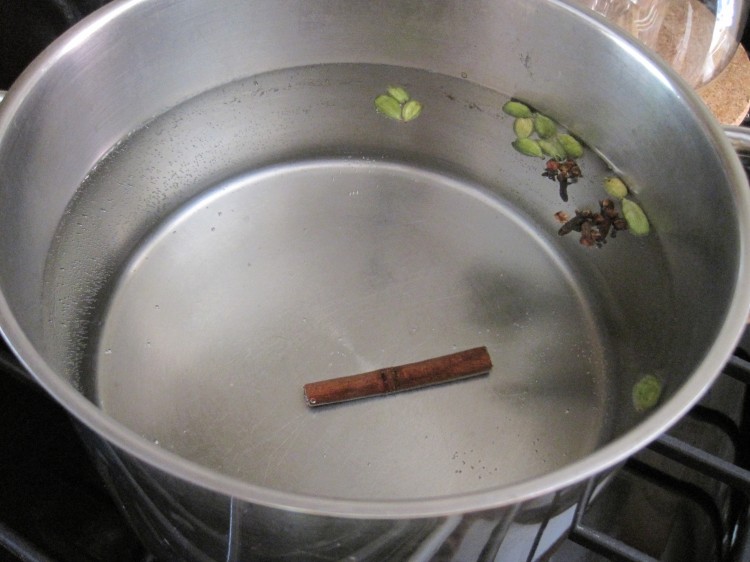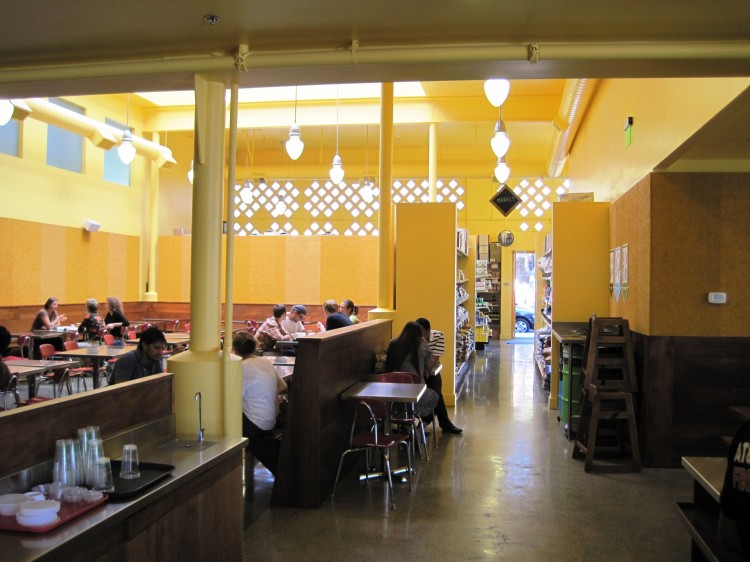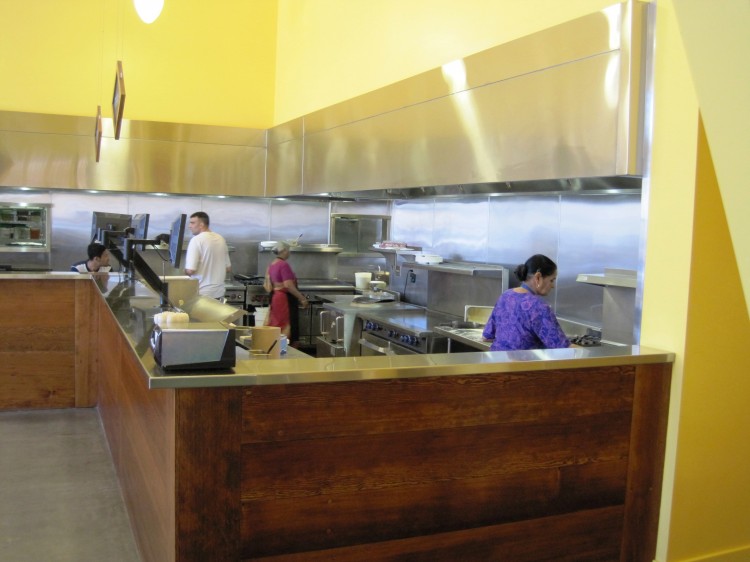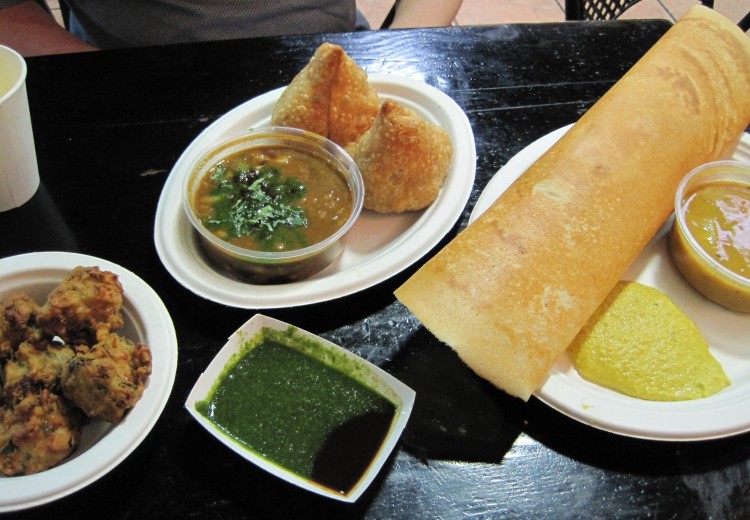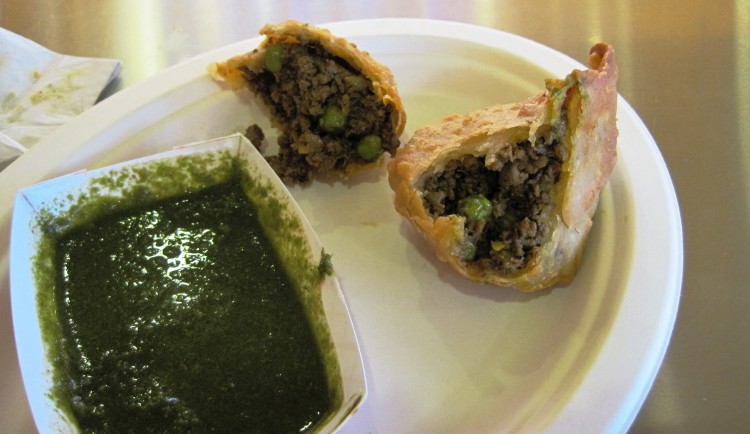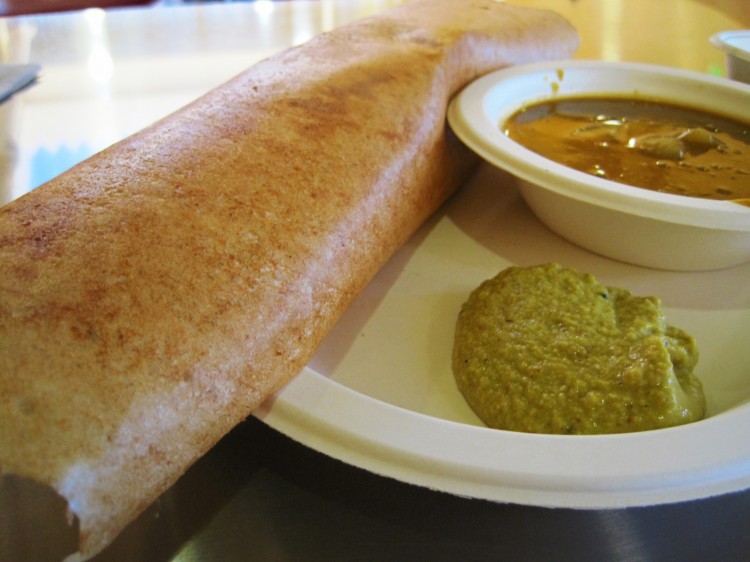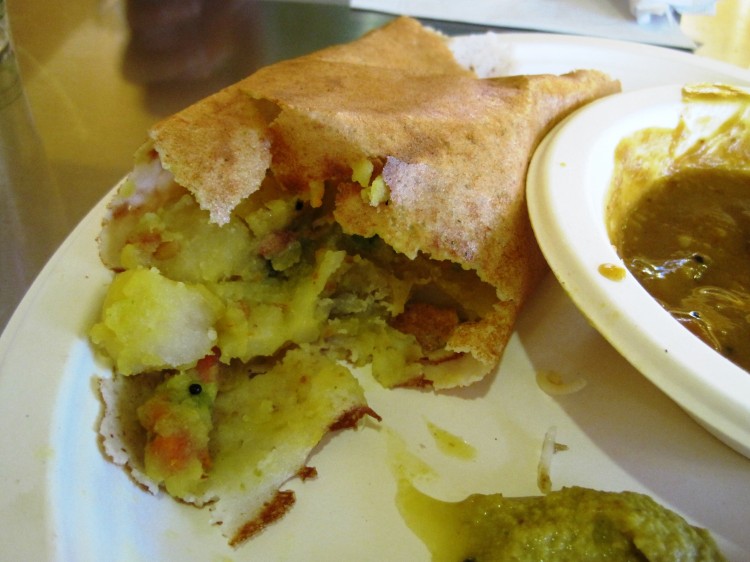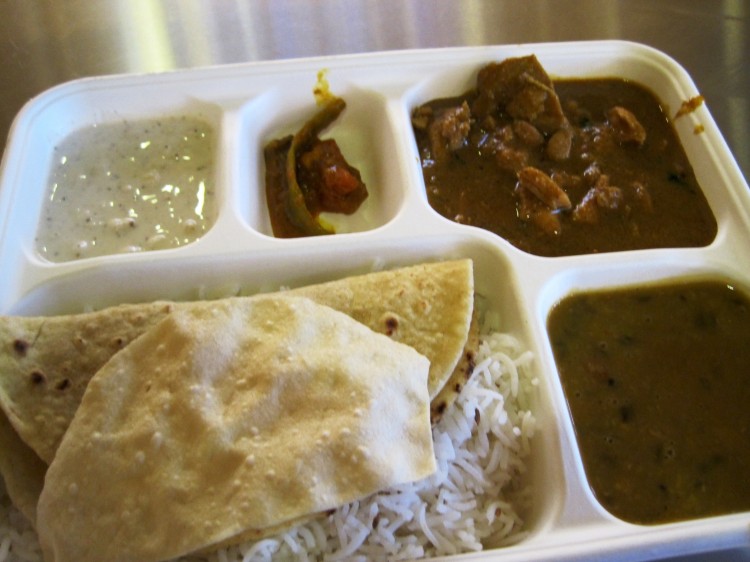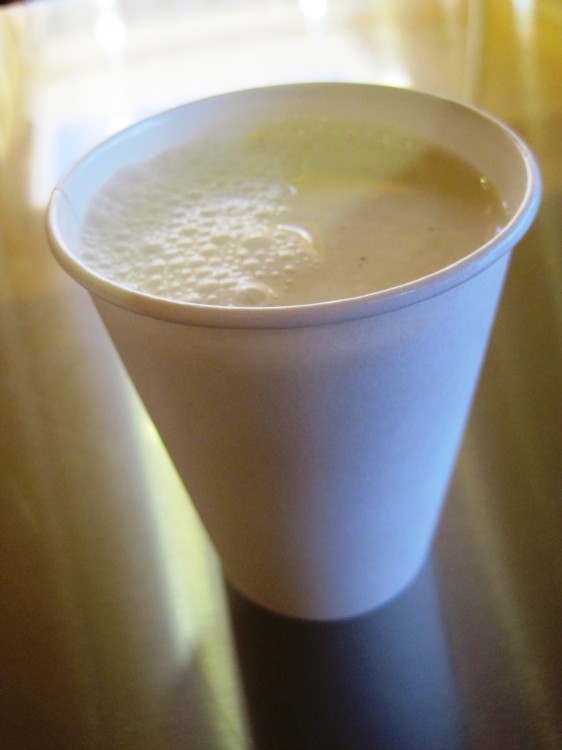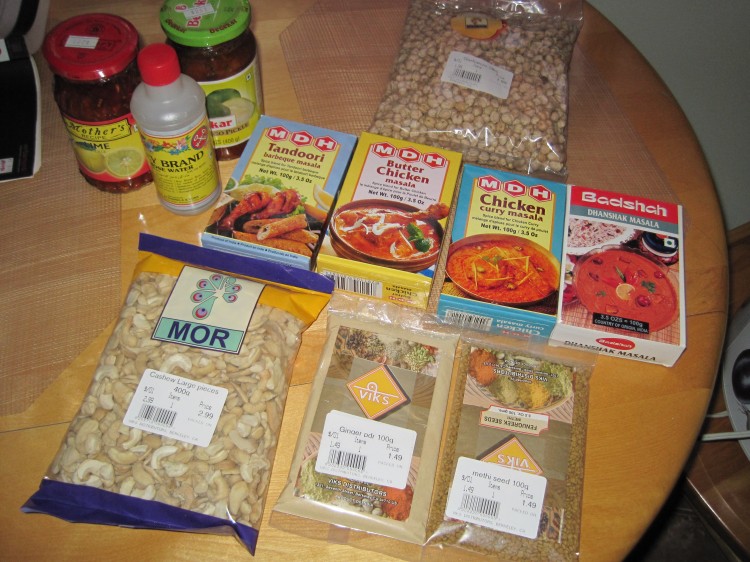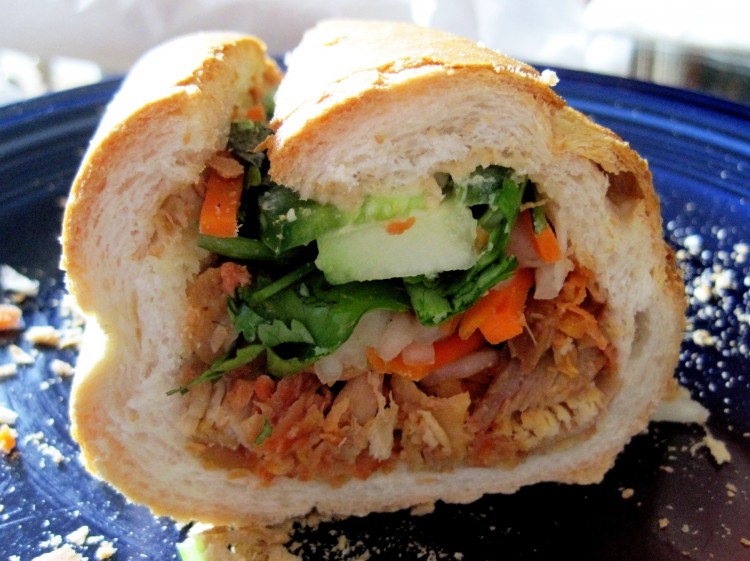
Cross-section of Vietnamese sandwich (banh mi) from Ba Le in El Cerrito, CA
I crave bánh mì on a regular basis, so I’m happy that my Honda Civic and I need to travel only a few blocks from my house on the El Cerrito/Albany border for satisfaction.
Bánh mì are Vietnamese sandwiches, a hybrid of pickled veggies and French-inspired cold cuts or other meat on long, crispy, baguette-type rolls made of both wheat and rice flour. There are bánh mì out there with meatballs, barbecued pork, pork roll, pork belly, tofu – you name it.
Atop the meat are sliced chili peppers, thinly sliced or shredded sweet and sour pickled carrots and daikon, cucumber, and a handful of cilantro. The dressing varies, but is often a bit sweet-sour.
In truly authentic versions, the roll is smeared with a little pâté, particularly the classic “combo” sandwich, which includes chicken or pork roll and head cheese. Yes, head cheese. Don’t be afraid of it. Anyone who eats Jell-O has no business snubbing head cheese.
Bánh mì are addictive because of the contrast in textures and the interplay of the crisp roll, salty and savory meat filling, and brightness of the pickled vegetables. Like a good slice of pizza, a good Vietnamese sandwich must meld into something greater than the sum of its parts.
We’re not talking Subway here. When you bite into a bánh mì, and you know your Vietnamese cuisine, the vegetables will ring familiar. Think “lettuce wrap” without the lettuce.
Obviously, this is fusion food born of French colonialism. I know this is a downer, which is why smart, snappy and light food publications often sidestep history altogether. Mentioning oppression certainly puts a damper on selling a trendy lifestyle.
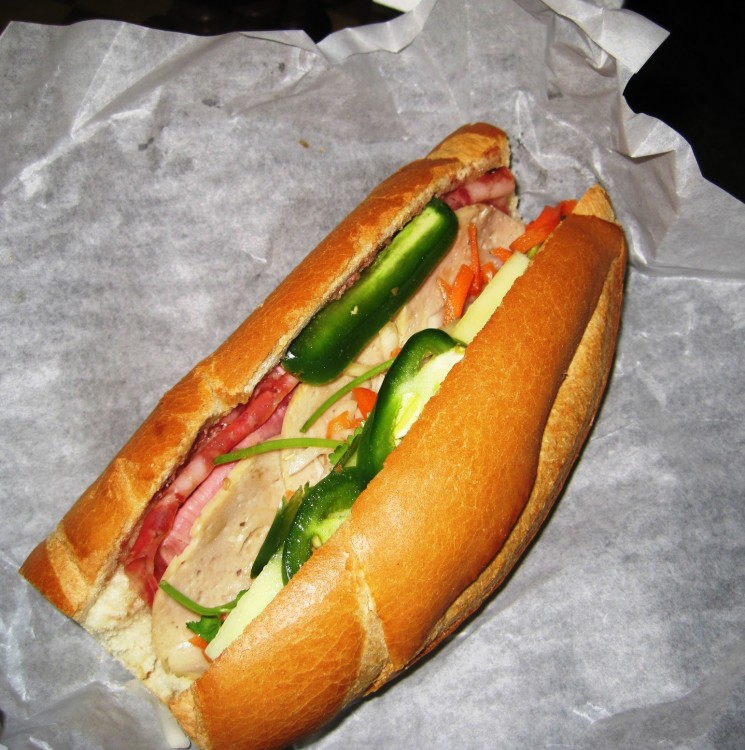
Combo (#2) Vietnamese sandwich (banh mi) from Ba Le in El Cerrito, CA
These unique sandwiches are inexpensive, great for a substantial snack or light meal, and feed that “I have no idea what I want to eat” yen.
When I want authentic bánh mì, I go to Ba Le, a tiny take-out place with one lonely table in a God-forsaken strip mall on San Pablo Avenue in El Cerrito.
Ba Le is hardcore. While it’s a polite place, you quickly order by number and step aside for the next person in line. If you want to screw around, go to the next place I talk about. If you never had bánh mì, then just order a #2 ($2.50), which is a combo. They use pâté here. Like I said, hardcore.
The rolls at Ba Le are superior. Bánh mì refers to both the roll and the sandwich, by the way. If the baguette roll isn’t right, the sandwich won’t work.
There are 10 sandwiches on the board, with an average price of about $2.50. Beside the #2 combo, I like the #6 ($2.50), which is bacon (pork belly), and the #5 ($2.25), meatball. I certainly wouldn’t kick the #1 ($2.25), ham and head cheese, out of bed.
My husband and son go for the #8 ($2.50), grilled pork.
The veggies are crisp and fresh, and the meat is always high-quality. They have a vegetarian option, too, but I admit to never having tried it.
One rainy day I noticed a sign for bo kho ($6), so I 86ed my sandwich order and went with that, which any sane person would have done.
Bo kho is a savory beef soup with a nicely spiced, reddish broth that’s eaten with a baguette or noodles. There are hearty pieces of potato and carrot, and it comes with the full complement of fresh herbs and chilis on the side. Great for dipping sandwiches into, by the by.
If you visit and they don’t have the bo kho and you want something like it, get the spicy beef noodle soup ($6), also good.
Both soups will have some beef tendon.
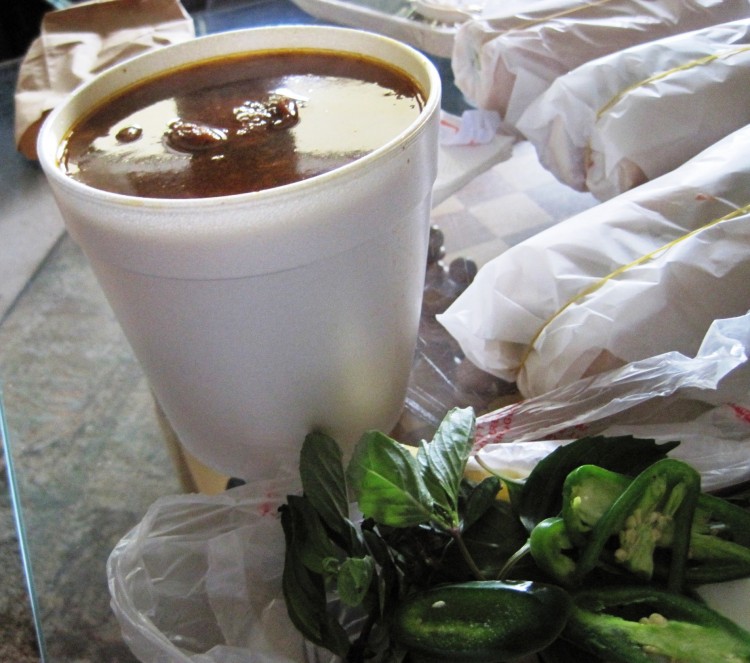
Bo kho (beef stew soup) from Ba Le in El Cerrito, CA
I have to give them kudos for packing orders well – especially the soups.
Sundays, when Ba Le is closed, we go with our second option.
Hong Kong Snack House in the Pacific East Mall in El Cerrito/Richmond produces respectable bánh mì from $2.95 to $3.95 apiece. They’re bigger than Ba Le’s, but there’s no pâté. The rolls are crusty and light, and they offer six options.
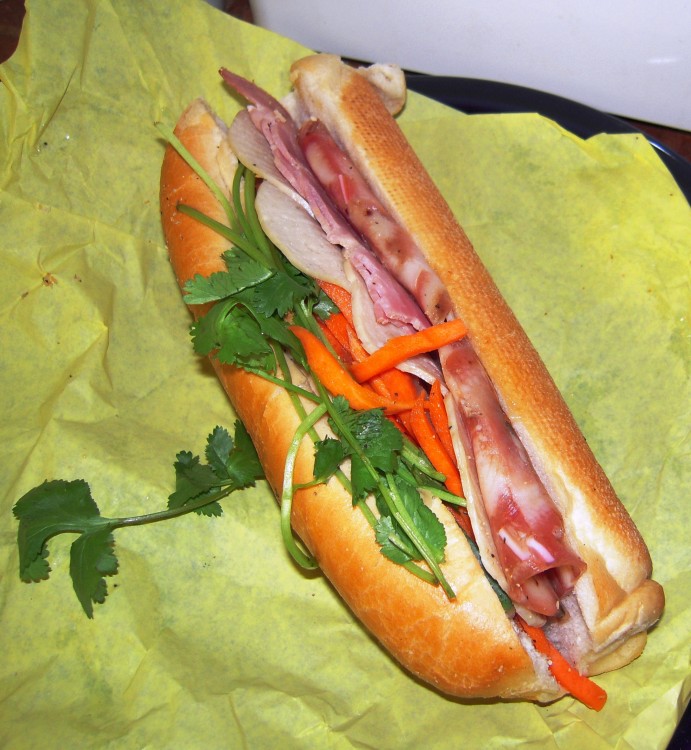
Combo Vietnamese sandwich (banh mi) from Hong Kong Snack House
Their barbecued meat is a little less sweet than at Ba Le, but there’s always some sweetness to this option.
Order the combo, if in doubt, which has ham, pork ear (which is in head cheese form) and pork roll ($3.95). The proprietors are super nice, so you can chat with them about sandwich contents beforehand to get exactly what you want.
Hong Kong Snack House is take-out only, and in a small stall. There’s a huge menu, though, and you’ll find street food, like curry fish balls on a skewer ($1.75).
I like visiting because they have many things not easily found.
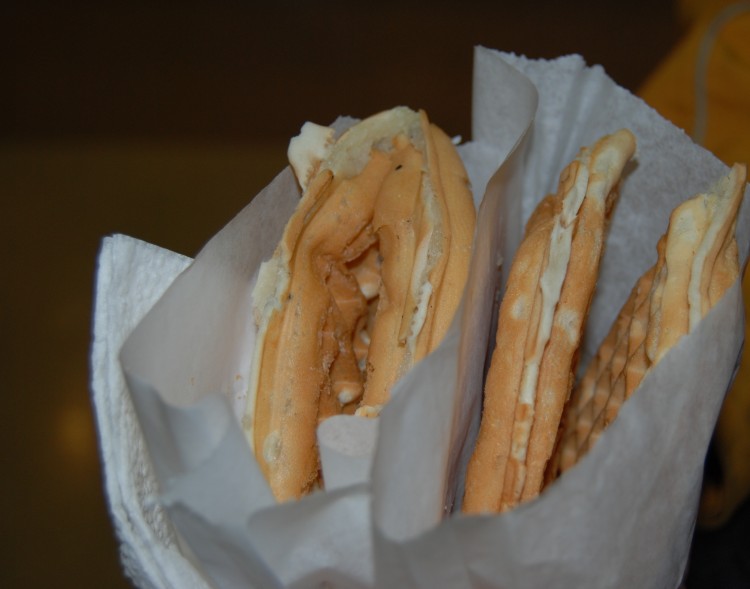
Waffles at Hong Kong Snack House
Have a coconut sesame waffle ($1.95). Hot, crispy and a little sticky-soft inside, it’s a dessert that’s not too sweet, and you should eat it on the fly because it won’t travel well. I also like the Hong Kong-style egg puffs, starting at $3.50. These are also waffle-like entities, and made to order.
Go ahead and wash your bánh mì down with fresh sugar cane juice ($4).
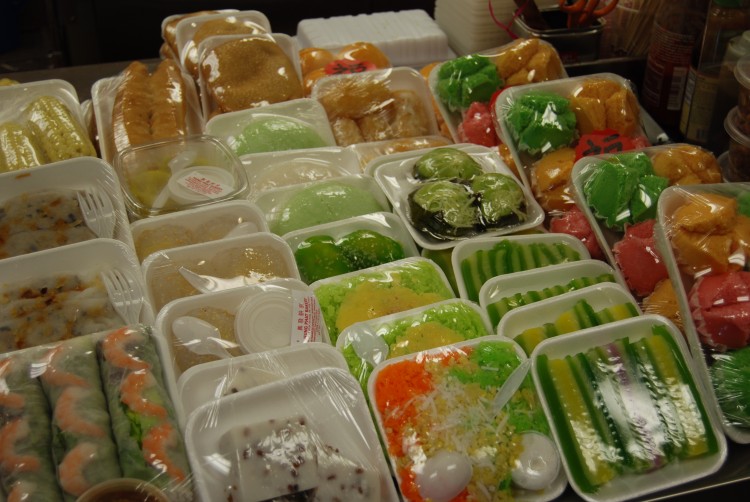
Some pre-packed snacks at Hong Kong Snack House for Chinese New Year
It looks like I might have a third option for these sammies, because I noticed a new strip mall pho joint the other day with a cardboard “bánh mì” sign in the window. I’ll be checking Heng Heng Pho (10386 San Pablo – near Stockton, El Cerrito) out soon and will report back.
One final little generic tip about Vietnamese sandwiches: try to get them early in the day for the freshest rolls.
Ba Le
10174 San Pablo Ave (near Central)
El Cerrito
(510) 528-8882
Open daily except Sunday, 8 a.m. – 6:00 p.m.
Hong Kong Snack House
Pacific East Mall
3288 Pierce St (near Central)
Richmond
(510) 508-7354
Open daily except Wednesday, 8 a.m. – 6:00 p.m.

